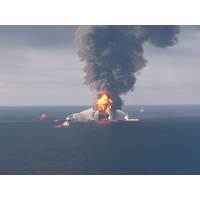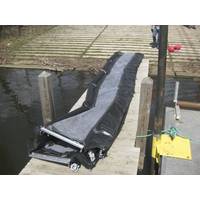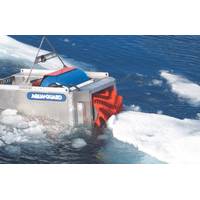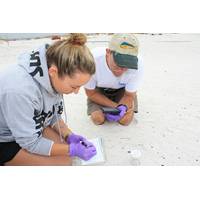
Philippines to Deploy Subsea ROV to Pinpoint Location of Stricken Tanker
about 800,000 litres (211,338 gallons) of industrial fuel oil when it suffered engine trouble on Feb. 28 in rough seas, according to the coast guard. It was not immediately clear what caused the Philippine-flagged vessel to sink, but all 20 crew members were rescued before it went down.Spilled oil had been detected on the shore and in coastal waters near more than 60 villages close to the site where the vessel is thought to have sank, the disaster agency said.About 36,000 hectares (88,958 acres) of coral reef, mangroves, and sea-grass were potentially in danger of being affected

Dogs Trained to Detect Crude Oil on Gulf Coast Beaches
a team of humans must dig pits every 10 meters to determine if there’s any oil.”Baxter adds that while canines have been used for this type of work in other areas/environments, this study specifically investigates the ability for Oil Detection canines to be trained to only respond of fresh (spilled) oil and ignore any naturally occurring samples (tar balls) that wash up on Texas Gulf beaches. The program works under the guidance of the TAMU-CC Institutional Animal Care and Use Committee, which provides oversight and institutional reviews of research activities involving live vertebrates.

David Kennedy Designated as Chair of US Arctic Research Commission
;s degree in anthropology from the University of Northern Colorado, and then spent six years as a U.S. Air Force pilot based in Alaska. He subsequently worked at the University of Alaska’s Geophysical Institute in Fairbanks as the Research Facilities Director, and later the Director of the Spilled Oil Research Team focusing on Arctic pollution issues.This led to a 30-year career at the National Oceanographic and Atmospheric Administration (NOAA), culminating as the Senior Policy Advisor for the Arctic region where he addressed policy goals, objectives, and programs until 2020.He previously

What Did Scientists Learn from Deepwater Horizon?
surface, and the results are ambiguous about whether dispersants helped microbes break down the oil at all.“I think the biggest unknowns still center on the impact of dispersants on oil distribution in seawater and their role in promoting—or inhibiting—microbial degradation of the spilled oil,” says Kujawinski, whose lab was the first to identify the chemical signature of the dispersants, making it possible to track in the marine environment.Though the authors caution that the lessons learned from the Deepwater Horizon release may not be applicable to all spills, the review highlights

Coast Guard Tests Underwater Oil Barrier System
, D-Mich., observed portions of the test.This is one of several efforts the RDC is undertaking to improve spill response capabilities for non-floating oil because of the increasing transport of oil sands and diluted bitumen, known as dilbit. Depending on environmental conditions and the type of oil spilled, oil can sink to the bottom of inland water bodies and travel with the current.RDC returned to Michigan in late May to test an underwater barrier system designed for offshore environments and large lakes. The test was conducted from Coast Guard Cutter Hollyhock in Lake Huron near Port Huron.RDC

'Roomba' in the Arctic
; But in the Arctic, this could be a challenge of scale. Bennett noted that the “ice cutting mechanism is not intended to macerate icebergs.” Rather, current equipment is intended to “chop up smaller ice chunks into slush with the intention of positioning the skimmer into pockets of spilled oil.” In the meantime, Bennett said that R&D continues, focusing on improving the ice cutting functionality. He said the data collected during the Arctic tests is invaluable for further development. Without saying when, Bennett predicted that “the system, with a few

MTR100: Ohmsett
agencies, private industry, and oil spill response organizations from around the world, Ohmsett is the premier training site for their emergency response personnel. With this hands-on training using real oil, participants are able to increase proficiency using booms and skimmers, practice removing spilled oil in harbor chop and wave conditions, and analyze skimming performance after collecting and measuring recovered oil. Ohmsett’s outdoor saltwater wave/tow tank measures 203 meters long by 20 meters wide by 2.4 meters deep and is filled with 10 million liters of crystal clear saltwater. A

Scientists Train Students on Oil Spill Research
catalogued many of these samples in an on-line database to make the data available to the public and scientific community. How the compounds react and weather in the environment also can help inform the chemical industry, governments, and clean-up efforts when future oil spills occur. "Spilled oil undergoes a series of changes due to Mother Nature called 'weathering.' Weathering differs from one site to another based on several factors including the type of oil spilled and the local climate. Therefore, each location is a living laboratory that allows us to interrogate how Nature responds

Students Protect Inlets from Oil Contamination
. Gibeaut, Endowed Associate Research Professor for the Harte Research Institute at Texas A&M-Corpus Christi, will serve as the primary investigators for the project. Under the TIPS program, researchers will develop specific plans for each tidal inlet detailing how to contain and possibly divert spilled oil before the connecting bays, estuaries, and rivers are affected. “These inshore marine species are at the base of the marine food chain and support sport and commercial fisheries, ecotourism, and the quality of life for everyone who lives in or visits the Texas coast,” said Mr. Wood


 February 2024
February 2024





